TEAM 10: Sparkle
Spring 2008
last updated: April 1, 2008
MEMBERS
- Jefferson Ahn
- Langtian Lang
- Mogeng Lu
- Shang-Wei Wang
PROJECT CONCEPT
This project will allow both kids and adults to enjoy jump roping in an innovative way. Replacing regular jump ropes with a rope of led lights that change color and display words/images controlled by embedded components such as accelerometers, our project will also calculate / display calories burned.
MOTIVATION
Kids are getting fat because they don't exercise any more. Jump roping is a good way of exercise. We expect our innovation to bring fun back to jump roping and keep kids healthy.
COMPETITIVE ANALYSIS
Valeo Speed Jump Rope
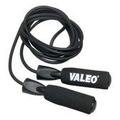
- Regular Jump Rope
- Our led lighted rope is more attractive to kids and can calculates calories burned
LED Blinking Jump Rope
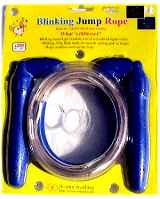
- A jump rope that blinks in a uniform fashion
- Our product changes color / displays words based on usage
Digital Jump Rope with Calorie Burn

- A digital counter that keeps track of repetition, elapsed time, and total calories
- Our product can display the results with led lights
TECHNICAL SPECIFICATIONS
Hardware:
Software:
- WinAVR to develope ATMEGA88-20PU program
- Assembly
Protocols:
- Serial-to-Serial to upload program
REQUIREMENTS
Functional:
- Keep track of repetition and elapse time
- Calculate calories burned
- Allow user input for weight / display options
- Changing color and / or displaying words
Non-Functional:
- Battery Operated
- Ensure structural integrity of all components under normal usage
- Flexible material for ease of use
ARCHITECTURE
Basic Architecture Diagram

USE CASES (INTERACTION DIAGRAMS)
Use Case Diagram
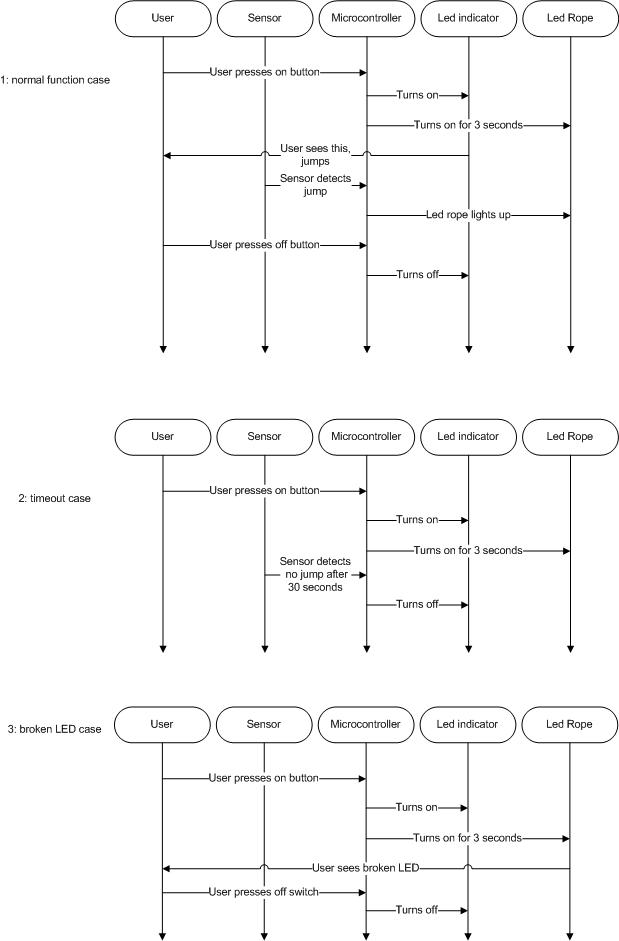
SYSTEM STATES & TRANSITIONS
State Machine Diagram
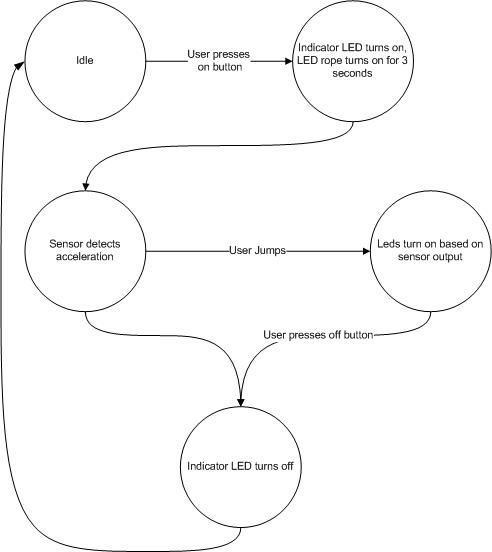
RISKS & MITIGATION STRATEGIES
- Assembly fragile: The jump rode has to withstand out-of-control children beating up the rope. Casing becomes challenging. Tests need to be done to ensure minimum damage after normal usages and provide extra hardware (LEDs) for easy replacement in case of failure.
- Weight battery: The product might be overweighted for use, battery will be the primary weight adder.
- Battery Life: Battery life will be a tradeoff to reduce the weight of the system.
- Malfunctioning: Self tests will be embedded in product to detect malfunctioning hardware.
- Physical side effects: Flashing lights rotating around a person may cause dizziness. A general health warning will be supplied with the product.
ERROR HANDLING
To be completed.
IMPLEMENTATION DETAILS
Schematic for ATMEGA88-20PU with LEDs, accelerometer, and serial connection
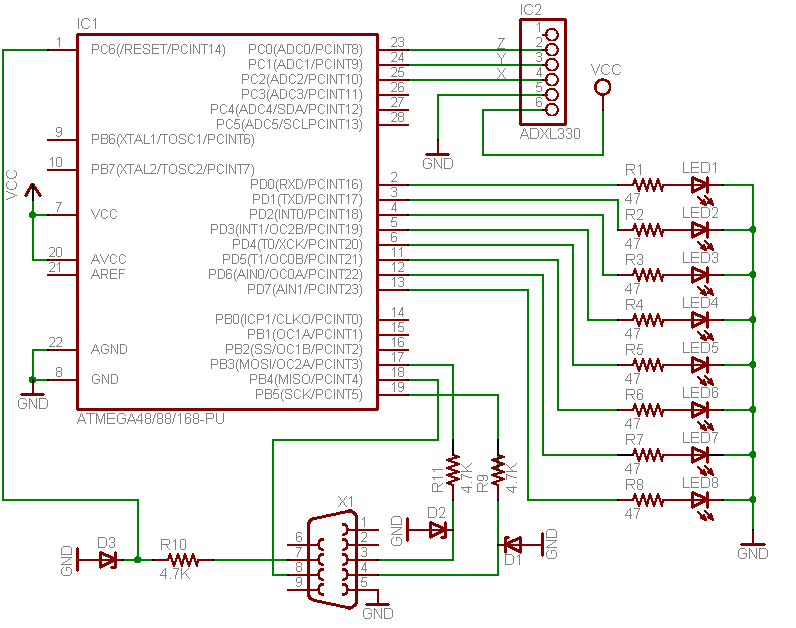
The atmega88 is programmed to sample ADC lines and start single conversions. These
in turn set off interrupts which we catch and store the accelerometer data for all
three axis. The data is then used to determine how many LEDs should light up. The
more acceleration the more LEDs light up (shown in the following pictures).
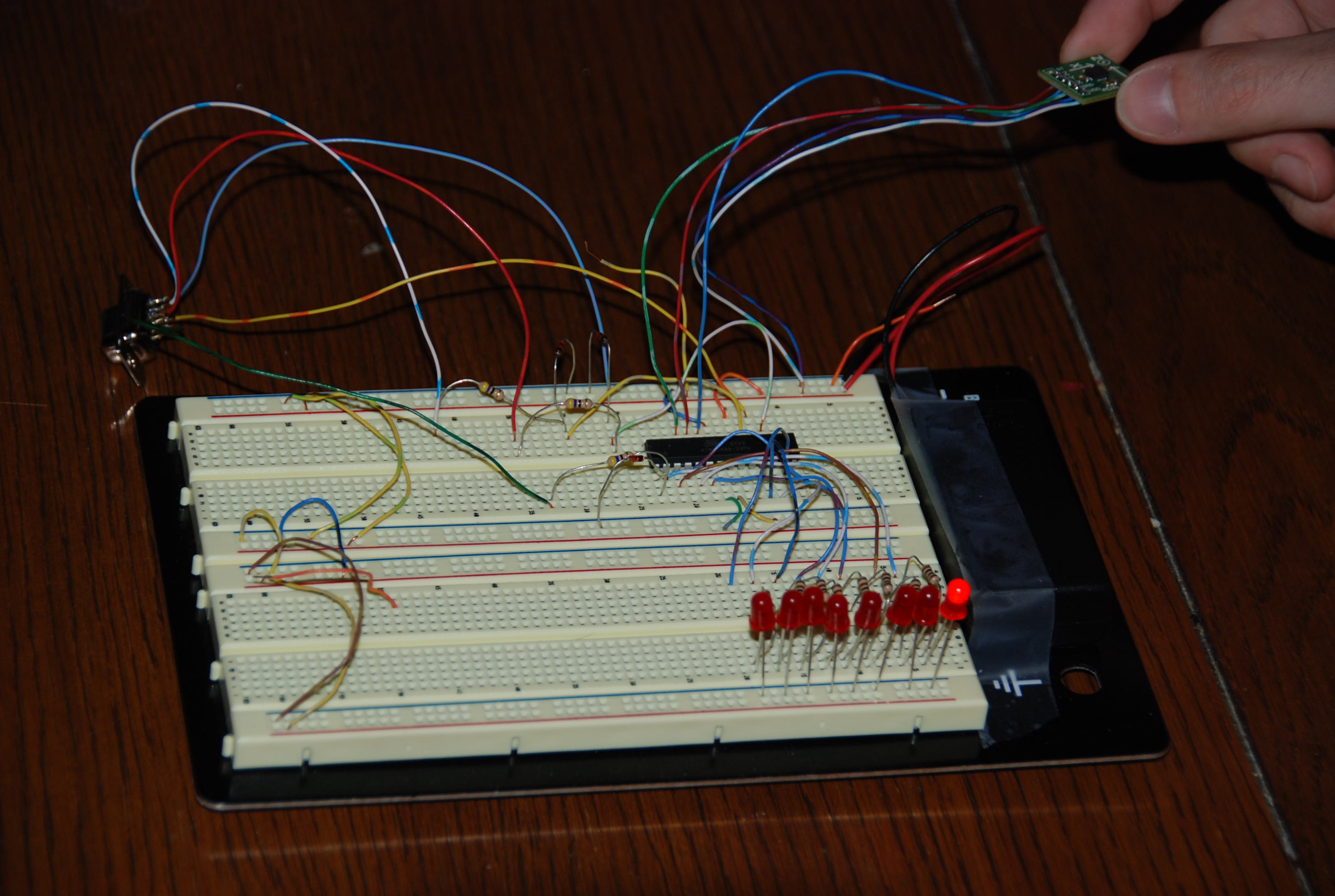

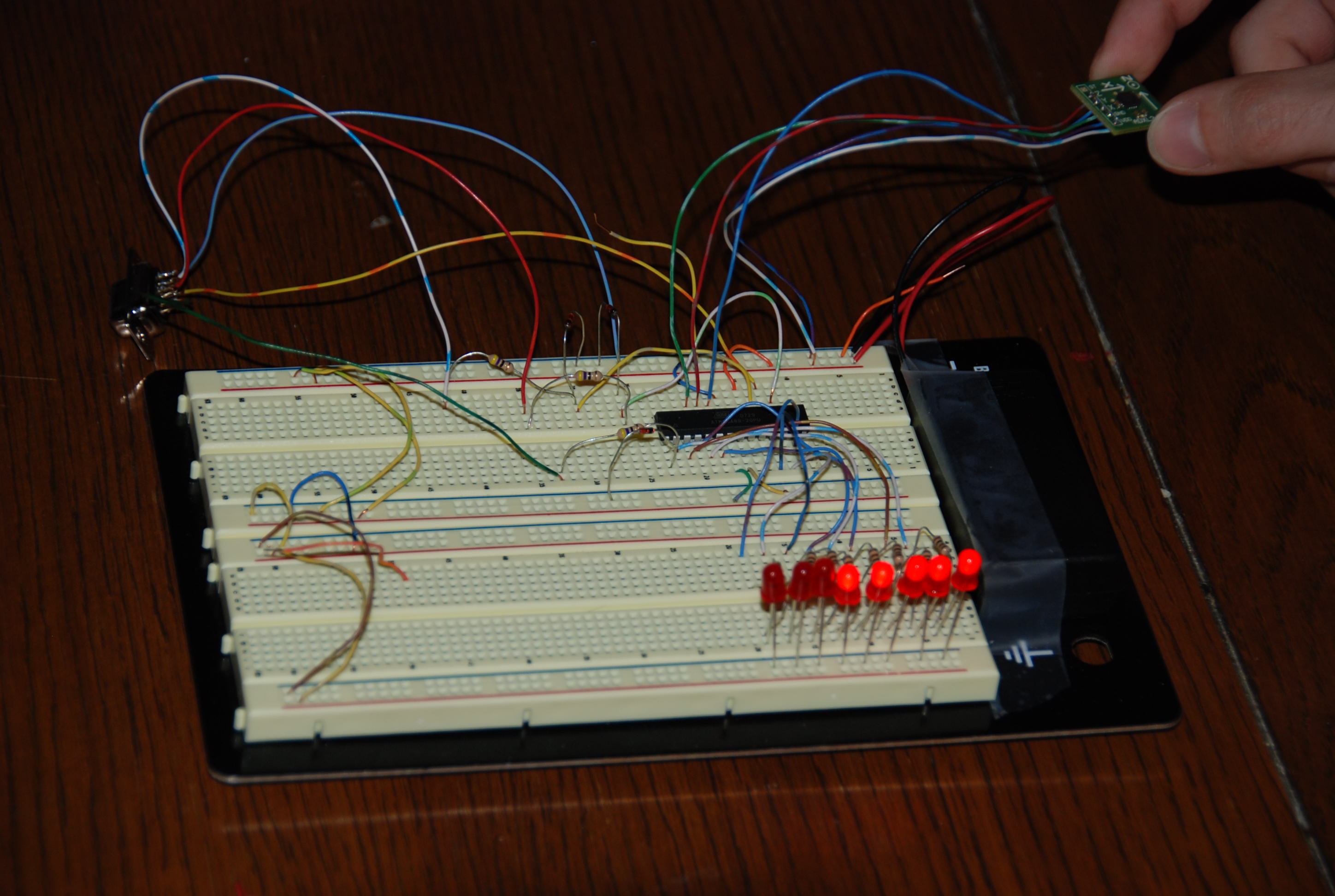
We are currently in the process of finding suitable parts to start making an actual
rope. Initial ideas are of PVC piping (for the handles) and clear tubing (surgical
or something similar).
TEST CASES
Power ON/OFF
- Makes sure rapid power ON/OFF does not introduce unexpected problems for the next startup
- HOW: Raidly switch ON/OFF, then stop at a switch on state, see if the system works expectedly
- Fault-free
Accelerometer
- Makes sure accelerometer readings are correct
- HOW: Measure travel distance for different altitudes and compare the readings to find percentage of errors. Also, the test should be carried out for a while to see the effects of drift.
- Fault-free
LEDs
- Makes sure the number of light-up LEDs increases with acceleration
- HOW: Move the accelerometer from slowly to rapidly and observe the number of light-up LEDs.
- Fault-free
Communication
- Make sure different components can communicate properly with each other
- HOW: Test component through AD port and light up LEDs
- Fault-free
EXPERIMENTAL EVALUATION
Experiment #1
- Metric of Interest:
Accelerometer outputs with respect to rotational speed.
- How to measure:
Place the accelerometer within a handle and wire it to our breadboard. Measure the speed of simulated
jumps (RPMs) in relation to the voltage output shown by LEDs.
- Units:
Revolutions per Minute (RPM) per Voltage (measured by LEDs)
- Why itíŽs important:
Because this allows us to understand how sensitive the accelerometer is and how to use the output it gives
- Initial Result:
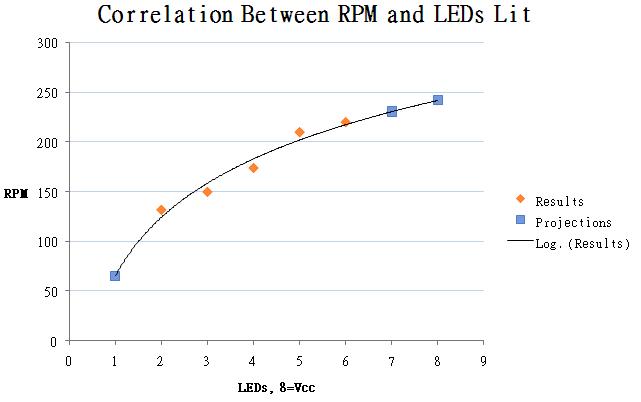
The experiment shows that the faster a person can jump, the system awards the person with more bright LEDs. The line shows the predicted RPM for achieving the correspongding number of LEDs, and since the accelerometer does not behaves linearly, we could change our threshold values to make achieving more LEDs even more challenging. Though I'm not sure why we would do that since we could not even beat the 7-LED level.
We appreciate Jeff's efforts for jumping.
LESSONS LEARNED
How to write my first html
FUN STUFF
To be completed.
REFERENCES
- Project Proposal and Requirements,
Team Project Presentation, February 1, 2008
- Design & Architecture,
Team Project Presentation, February 15, 2008
- Mid-semester Project Status,
Team Project Presentation, Date TBD
- Test Plan & Experimental Validation
Team Project Presentation, March 28, 2008
- Final Project Presentation,
Team Project Presentation, Date TBD
- Project Poster,
May 2, 2008
- Project Video
Back to the top of this page
18-549 course home page







